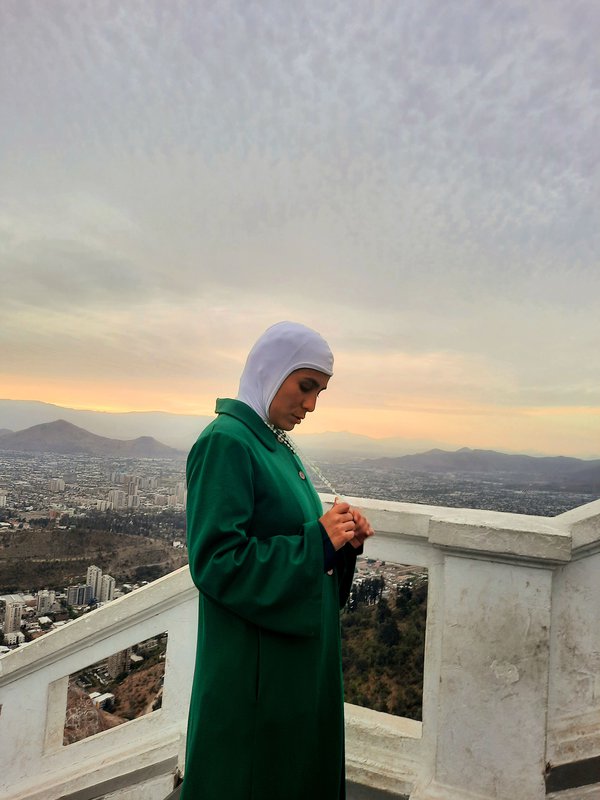Teatro
“(Stephie Bastías) is a director and playwright with original ideas and images that hatch into solid future pieces that cannot be ignored”.

Written and directed by: Stephie Bastías | Cast: Viviana Basoalto, Valeria Leyton, Nicole Vial, Karina Ramírez, Juanita Lara, Camila Paredes, Fernando Rosselot y Maximiliano Solís | Set design: Jose Carrera |Scenographic realization: Taller José Rojo| Costume designer: Catalina Álvarez | Costume realization: Marta Bravo| Sound desing: Vicente Cuadros | Asistente de montaje: Sebastián Carez | Maneuvers: René Cantodea | Coproduced by: La Trama, the Camilo Henriquez Theater
Stephie Bastías
Director
Taking women into account in stories
This actress and director from the company La Trama participated at the Santiago a Mil Festival last year with La torre, as well as at the Las Condes Young Theater Festival’s New Directors in Chilean Theater season, the New Frontiers Festival and Fentic. She graduated in theater studies from the Academy of Christian Humanism University (ACHU) and has a diploma in theater directing from the Finis Terrae University. She has taught at the ACHU and at schools, as well as acting in different productions.
“(Stephie Bastías) is a director and playwright with original ideas and images that hatch into solid future pieces that cannot be ignored”.
- Playwright and director Stephie Bastías is one of the most promising exponents of her generation, easily recognizable thanks to her visual style and the nature of her scripts, which bring the different experiences of women oppressed in different ways by the system to the stage. Last year, Bastías formed part of the Spotlight on Young Creators segment at Santiago a Mil 2020.
- Made up only of actresses, La Trama is a group that, for a while now, has been consolidating itself as one of the companies on the local scene that is most in tune with what is going on in the world, with an important focus on gender issues.
-This play, together with La torre which was part of Santiago a Mil 2020, is part of what young director Stephie Bastías calls La trilogía del encierro: theater plays that come together to depict the story of women in Western history. Both plays have something very specific in common: their protagonists, symbolically prevented from expressing themselves, find a language of their own that allows them to share their experiences during a grueling type of confinement.
Feminine piety during Colonialism: Girls had to be at least 16 to join a convent (as a white veil novice) and 18 to take vows (as a white veil nun). Find out more about cloistered life from Colonial times to the present day in this entry in Memoria Chilena.
—Find out more about the director’s thought process in this video from the Academy of Christian Humanism University.



El Convento
By La Trama | Written and directed by Stephie Bastías
- Chile
- Spanish
- 60 minutes
- + 16
A group of nuns is cloistered away praying for the world. Their isolation leads them to lose their individuality, until an unexpected visit does away with their claustrophobia.
Six nuns live in a convent where they are forbidden from speaking Spanish after taking a vow of perpetual silence. The few times they do speak, they do so in Latin. In this claustrophobic confinement, they’ve found ways of communicating through songs, gestures and small sounds, turning their routine into an ongoing choreography. The passing of the years and constant repetition of their actions have made them lose all notion of time, with past and present merging. For them, the outside world is something completely unknown that they try to understand by imagining possible scenarios, until one day an unexpected visit disrupts their routine and leaves its mark on them forever.
“(Stephie Bastías) is a director and playwright with original ideas and images that hatch into solid future pieces that cannot be ignored”.

Written and directed by: Stephie Bastías | Cast: Viviana Basoalto, Valeria Leyton, Nicole Vial, Karina Ramírez, Juanita Lara, Camila Paredes, Fernando Rosselot y Maximiliano Solís | Set design: Jose Carrera |Scenographic realization: Taller José Rojo| Costume designer: Catalina Álvarez | Costume realization: Marta Bravo| Sound desing: Vicente Cuadros | Asistente de montaje: Sebastián Carez | Maneuvers: René Cantodea | Coproduced by: La Trama, the Camilo Henriquez Theater
Stephie Bastías
Director
Taking women into account in stories
This actress and director from the company La Trama participated at the Santiago a Mil Festival last year with La torre, as well as at the Las Condes Young Theater Festival’s New Directors in Chilean Theater season, the New Frontiers Festival and Fentic. She graduated in theater studies from the Academy of Christian Humanism University (ACHU) and has a diploma in theater directing from the Finis Terrae University. She has taught at the ACHU and at schools, as well as acting in different productions.
»(Stephie Bastías es) una directora y dramaturga con ideas e imágenes originales que pueden eclosionar en una propuesta futura sólida y a tomar en cuenta«.
-Porque Stephie Bastías, su dramaturga y directora, es una de las más prometedoras exponentes de su generación, con una puesta en escena reconocible tanto por su lenguaje visual como por la naturaleza de sus textos, que ponen en escena distintas vivencias de mujeres oprimidas de diversas formas por el sistema. El año pasado, Bastías fue destacada dentro del foco Jóvenes Creadoras de Santiago a Mil 2020.
-Porque La Trama, compañía compuesta solo por actrices, es un grupo que de a poco va consolidándose como uno de los más afiatados de la escena local, con un fuerte enfoque en los temas de género.
-Porque esta obra, junto con La torre, presente en Santiago a Mil 2020, forman parte de lo que la joven directora Stephie Bastías denomina La trilogía del encierro: piezas teatrales que se cruzan entre sí para dar cuenta del sentido histórico de la mujer en la historia de Occidente. Ambas obras tienen un particular punto en común: sus protagonistas, simbólicamente impedidas de expresarse, buscan un lenguaje propio que les permita compartir sus experiencias en medio de un apremiante encierro.
La religiosidad femenina durante la Colonia: La edad mínima para incorporarse a un convento era de 16 años (novicia de velo blanco) y de 18 años para profesar (monja de velo negro). Conoce más sobre la vida de encierro en el Chile de la Colonia hasta el presente en esta entrada de Memoria Chilena.
—Conoce más del pensamiento de la directora en este video de la Universidad Academia de Humanismo Cristiano.
PRODUCE

COLABORA





